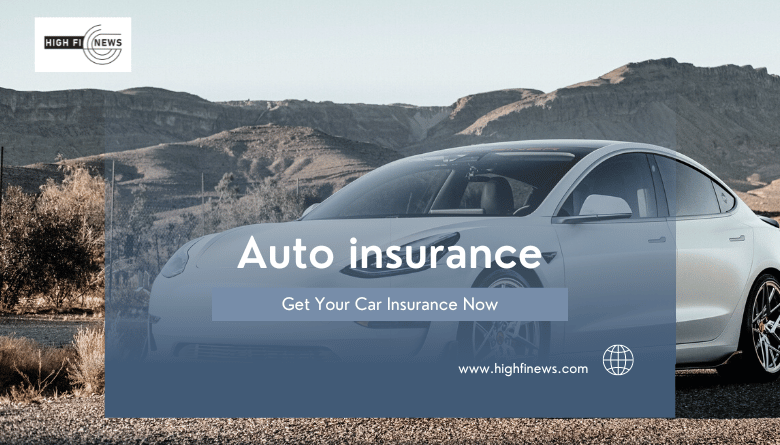How to Compare Auto Insurance Rates?


When it comes to comparing car insurance rates, the process should be straightforward. Every quote you receive should be free of charge, regardless of whether it’s from a well-known provider like Geico, Farmers, or a smaller insurer that might be unfamiliar to you. While some auto insurers may require a down payment to initiate your policy, obtaining a simple quote estimate, whether online or through an agent, should always come without a cost.
1. Gather Your Information
To facilitate a quick and easy online car insurance comparison, ensure you have the following information at your disposal:
Personal Information: Gather the addresses, dates of birth, occupations, driver’s license details, and marital status of all individuals you wish to include on the policy.
Vehicle Information: Provide details such as mileage, date of purchase, and the Vehicle Identification Number (VIN) for each car. If you haven’t bought the vehicle yet, be ready with the mileage, make, model, and year.
Driving History: Compile information on all claims, violations, and tickets over the past five years, including any completed driving courses.
Current or Previous Insurer’s Name: If applicable, provide the name of the current or previous insurer for anyone on the policy or in your household. Some insurers may require coverage history, and if you intend to exclude someone living with you from the policy, you may need to show they are covered elsewhere.
2. Choose the Right Liability Car Insurance Coverage Levels
Understanding the significance of liability car insurance is crucial. It serves as financial protection beyond the initial investment in your vehicle. In the event of a severe accident leading to property damage or injuries, the associated bills can quickly escalate into significant amounts.
Liability auto insurance
Liability auto insurance acts as a safeguard against this worst-case scenario, creating a protective barrier between your assets and the potential financial burden. Selecting the appropriate liability limits is paramount in the car insurance quote comparison process. NerdWallet generally recommends having at least as much liability coverage as your net worth.
However, liability coverage levels are typically presented in a three-part format, such as 50/100/50 or 250/500/250, denoting individual injuries/total injuries/property damage. Insurers might refer to these limits more technically as bodily injury liability/total bodily injury liability/physical damage liability.
Liability insurance is available in thousand-dollar increments, so when opting for an auto insurance policy, you might encounter limits like 100/300/100.
You have the option of selecting:
• $100,000 for each person you inflict physical harm to in an accident.
• A total of $300,000 for all injuries sustained in a collision that you caused.
• $100,000 for any property damaged in a collision that you caused, including vehicles, structures, and fixtures like lampposts and mailboxes.
1. Know Your State’s Car Insurance Requirements
Ensure that any car insurance comparison tool you use is equipped with your state’s minimum car insurance requirements. Some states may necessitate specific coverages such as Personal Injury Protection (PIP), Medical Payments Coverage (MedPay), or Uninsured/Underinsured Motorist Coverage. In no-fault states, PIP or MedPay is often required, meaning each driver claims with their insurer for injuries, regardless of fault.
2. Determine the Need for Full Coverage Car Insurance
Liability coverage may not cover your car or injuries in an accident where you’re at fault. Consider “full coverage” car insurance, typically referring to policies including liability, comprehensive, and collision coverage. Remember, there’s no specific “full coverage” button; you’ll need to add comprehensive and collision coverage separately. This additional coverage will also impact your premium, and you’ll choose deductible amounts for each.
- Collision Insurance Covers:
- Damage caused to your car in an accident you’re responsible for.
- Damage to your car from hitting an object like a fence or pole.
- Damage to your car if another driver hits you.
- Comprehensive Insurance Covers:
- Stolen cars not recovered and damage from weather, floods, fire, falling objects, explosions, crashes with animals, and civil disturbances.
3. Collect and Compare Car Insurance Quotes
Obtain quotes from at least two or three companies, considering both regional and major insurers like Allstate, Progressive, and State Farm. Ensure each quote includes:
- Equivalent levels of liability and uninsured/underinsured motorist protection.
- Matching deductibles for collision and comprehensive coverage.
- Similar driver and vehicle information.
- All eligible discounts.
4. Compare Car Insurance Rates by Age
Factors influencing car insurance rates vary across insurers. While it’s challenging to pinpoint the most crucial factor, age significantly affects rates. Teen drivers and drivers in their 70s often face higher rates. Below are average costs for drivers with good credit and a clean history, categorized by age, for both full and minimum coverage.
| Age Group | Average Cost – Full Coverage | Average Cost – Minimum Coverage |
| Teens | $$ | $$ |
| 20s | 4,110$$ | 1,174$$ |
| 30s | 2,039$$ | 563$$ |
| 40s | 1,982$$ | 549$$ |
| 50s | 1,794$$ | 538$$ |
| 60s | 1,713$$ | 510$$ |
| 70s | 1,852$$ | 500$$ |
Understanding these aspects will empower you to make informed decisions when navigating the complex landscape of car insurance.
Compare Car Insurance Rates for 20-Year-Olds
Drivers around the age of 20 usually face higher car insurance rates due to a higher likelihood of accidents. NerdWallet suggests comparing rates to find the most cost-effective option, even if it may not be as affordable as other age groups.
To gain insight into how age impacts car insurance, we compiled average annual rates from nine of the 10 largest private passenger auto insurers based on market share data from the National Association of Insurance Commissioners.
Average Annual Rate for 20-Year-Olds, by Company
| Company | Full Coverage | Minimum Coverage |
| Allstate | $6,358 | $1,283 |
| American Family | $3,732 | $1,421 |
| Farmers | $6,950 | $2,109 |
| Geico | $3,375 | $951 |
| Nationwide | $5,252 | $1,851 |
| Progressive | $3,922 | $1,076 |
| State Farm | $4,452 | $1,202 |
| Travelers | $3,959 | $1,086 |
| USAA* | $2,971 | $737 |
Average Annual Rate for 20-Year-Olds, by State
| State | Full Coverage | Minimum Coverage |
| Alabama | $4,285 | $1,059 |
| Alaska | $3,324 | $862 |
| Arizona | $4,740 | $1,534 |
| Arkansas | $4,484 | $1,140 |
| California | $2,975 | $824 |
| Colorado | $5,773 | $1,596 |
| Connecticut | $7,214 | $2,957 |
| Delaware | $6,293 | $2,518 |
| Florida | $7,056 | $1,796 |
| … (and so on) | … | … |
(Continuation of the table for all states)
Compare Auto Insurance Rates for 35-Year-Olds
Drivers around the age of 35 generally experience lower car insurance rates due to fewer accidents. Here are the average annual rates for 35-year-olds by company.
Average Annual Rate for 35-Year-Olds, by Company
| Company | Full Coverage | Minimum Coverage |
| Allstate | $2,665 | $656 |
| American Family | $1,791 | $687 |
| Farmers | $3,106 | $938 |
| Geico | $1,846 | $491 |
| Nationwide | $2,279 | $785 |
| Progressive | $2,112 | $590 |
| State Farm | $1,976 | $471 |
| Travelers | $1,681 | $520 |
| USAA* | $1,432 | $362 |
This information provides valuable insights for individuals looking to secure appropriate and affordable car insurance based on their age group.
Average Annual Car Insurance Rates for 35-Year-Olds by State
| State | Full Coverage | Minimum Coverage |
| Alabama | $1,957 | $450 |
| Alaska | $1,776 | $363 |
| Arizona | $2,360 | $744 |
| Arkansas | $2,095 | $494 |
| California | $1,660 | $464 |
| Colorado | $2,670 | $614 |
| Connecticut | $2,916 | $1,214 |
| Delaware | $2,330 | $1,006 |
| Florida | $3,797 | $1,065 |
| Georgia | $2,521 | $724 |
| Hawaii | $1,889 | $537 |
| Idaho | $1,361 | $329 |
| Illinois | $1,927 | $539 |
| Indiana | $1,731 | $496 |
| Iowa | $1,676 | $274 |
| Kansas | $2,412 | $621 |
| Kentucky | $2,965 | $801 |
| Louisiana | $3,608 | $876 |
| Maine | $1,407 | $452 |
| Maryland | $2,409 | $1,022 |
| Massachusetts | $1,348 | $430 |
| Michigan | $2,496 | $626 |
| Minnesota | $1,872 | $552 |
| Mississippi | $2,118 | $590 |
| Missouri | $2,325 | $597 |
| Montana | $2,185 | $415 |
| Nebraska | $1,691 | $335 |
| Nevada | $2,603 | $944 |
| New Hampshire | $1,406 | $403 |
| New Jersey | $2,479 | $1,052 |
| New Mexico | $2,030 | $474 |
| New York | $2,209 | $853 |
| North Carolina | $1,597 | $502 |
| North Dakota | $2,329 | $540 |
| Ohio | $1,380 | $408 |
| Oklahoma | $2,261 | $532 |
| Oregon | $1,874 | $854 |
| Pennsylvania | $2,063 | $452 |
| Rhode Island | $3,341 | $1,189 |
| South Carolina | $2,291 | $739 |
| South Dakota | $1,838 | $301 |
| Tennessee | $1,958 | $467 |
| Texas | $2,966 | $874 |
| Utah | $1,795 | $731 |
| Vermont | $1,251 | $380 |
| Virginia | $1,787 | $657 |
| Washington | $1,723 | $593 |
| Washington, D.C. | $2,336 | $1,165 |
| West Virginia | $2,036 | $580 |
| Wisconsin | $1,817 | $437 |
| Wyoming | $1,069 | $191 |
Rate Comparison of Auto Insurance for DUI Drivers
| Company | Clean Record Rate | DUI Record Rate |
| Allstate | $2,665 | $3,939 |
| American Family | $1,791 | $2,433 |
| Farmers | $3,106 | $6,268 |
| Geico | $1,846 | $4,420 |
| Nationwide | $2,279 | $4,834 |
| Progressive | $2,112 | $2,645 |
| State Farm | $1,976 | $2,940 |
| Travelers | $1,681 | $2,950 |
| USAA | $1,432 | $2,621 |
Average Annual Car Insurance Rates for Drivers with a DUI by State
| State | Clean Record Rate | DUI Record Rate |
| Alabama | $1,957 | $3,519 |
| Alaska | $1,776 | $2,881 |
| Arizona | $2,360 | $3,840 |
| Arkansas | $2,095 | $3,216 |
| California | $1,660 | $4,126 |
| … (continued for all states) |
Comparison of Car Insurance Rates for Drivers with Poor Credit
| Company | Good Credit Rate | Poor Credit Rate |
| Allstate | $2,665 | $4,044 |
| American Family | $1,791 | $3,076 |
| Farmers | $3,106 | $6,478 |
| Geico | $1,846 | $2,566 |
| Nationwide | $2,279 | $3,147 |
| Progressive | $2,112 | $3,548 |
| State Farm | $1,976 | $7,289 |
| Travelers | $1,681 | $3,061 |
| USAA | $1,432 | $2,650 |
Average Annual Car Insurance Rates for Drivers with Poor Credit by State
| State | Good Credit Rate | Poor Credit Rate |
| Alabama | $1,957 | $3,532 |
| Alaska | $1,776 | $2,566 |
| Arizona | $2,360 | $3,606 |
| Arkansas | $2,095 | $3,464 |
| California | $1,660* | * |
| … (continued for all states) |
Note: California, Hawaii, and Massachusetts don’t allow insurers to use credit when determining car insurance rates. In Washington, the legal code around this issue is being debated.
Average Annual Rates for Drivers with an Accident, by Company
Here, we compare how different insurance companies adjust their auto insurance rates for drivers with a recent accident. The average annual rates for drivers with a clean record and those with a recent at-fault accident are presented in the table below:
| Company | Drivers with a Clean Record | Drivers with a Recent At-Fault Accident |
| Allstate | $2,665 | $4,084 |
| American Family | $1,791 | $2,642 |
| Farmers | $3,106 | $5,210 |
| Geico | $1,846 | $3,112 |
| Nationwide | $2,279 | $3,687 |
| Progressive | $2,112 | $3,005 |
| State Farm | $1,976 | $2,488 |
| Travelers | $1,681 | $2,376 |
| USAA* | $1,432 | $2,041 |
State-by-State Average Annual Rate for Drivers with an Accident
State regulations influence how much insurance companies can increase rates after an accident. The table below illustrates the average full coverage rates for 35-year-old drivers with a recent at-fault accident in various states:
| State | Drivers with a Clean Record | Drivers with a Recent At-Fault Accident |
| Alabama | $1,957 | $3,153 |
| Alaska | $1,776 | $2,472 |
| Arizona | $2,360 | $3,593 |
| Arkansas | $2,095 | $3,168 |
| California | $1,660 | $2,856 |
| … (continue the list) |
Insights and Analysis
- Company Variations: Different insurance companies exhibit significant variations in how they adjust rates after an accident. For instance, State Farm shows less than a 30% increase, while Geico and Farmers reflect close to a 60% hike in rates, on average.
- State-by-State Differences: State regulations play a crucial role, leading to varied increases in rates. For example, Rhode Island sees only a 2% increase, while Utah experiences a substantial 62% rise in average annual rates.
- Impact on Premiums: It’s essential for drivers to be aware of how their location and the insurance provider can impact the financial consequences of an at-fault accident.
By considering these factors, drivers can make informed decisions when comparing auto insurance rates after an accident.




